Mechanism of Coal Burst Triggered by Disturbing Mining-Induced Stress: An Experimental Investigation
Abstract
1. Introduction
2. Experimental Setup and Procedure
2.1. Equipment Setup
2.2. Coal Samples
2.3. Testing Procedure
3. Results
3.1. Relationship between Disturbance Control Variables and Stress Parameters
3.2. Relationship between Disturbance Control Variables and Peak Strain
3.3. Relationship between Different Disturbance Stress and Failure Characteristics
4. Discussion
4.1. Characteristics of Coal Burst Pits
4.2. Triggering Mechanism of coal Burst under Different Mining-Induced Stress Disturbed
5. Conclusions
- Disturbance duration of the coal sample under quasi-static load decreases with the increase of disturbance rate. The peak stress is not affected by the disturbance rate. It increases first and then decreases with the disturbance stress level. The peak strain increases with the increase in stress level. It is beneficial for coal samples to accumulate elastic energy at a relatively stable rate, the corresponding rock burst pit depth is the largest, and the most debris is formed. It corresponds to a high static load dominant coal burst.
- Disturbance duration and peak stress of coal samples under cyclic loading decrease with cyclic amplitude and frequency increase. The peak strain increased gradually with the increase of cyclic amplitude. It increased first and then decreased with the increase of peak frequency. The cyclic mining disturbance load is more likely to cause the coal sample to produce flaky or layered damage on the surface of the free surface. The cyclic load leads to the permanent deformation of the coal sample, corresponding to a seismic fatigue load dominant coal burst.
- The disturbance duration and stress peak of the coal sample under transient load decrease with the increase of transient increment and disturbance stress level. The peak strain decreases linearly with the increase of transient increment and increases with the increase of stress level. The dynamic impact failure characteristics caused by the transient mining disturbance load are superficial. Because the load is generated instantaneously, the energy accumulation and release speed are also speedy. After reaching a certain degree of damage, a violent spray is generated, and the final damage degree is intense. It corresponds to the instantaneous impact dynamic load dominant coal burst.
Author Contributions
Funding
Institutional Review Board Statement
Informed Consent Statement
Data Availability Statement
Acknowledgments
Conflicts of Interest
References
- Cook, N.G.W. A note on rockbursts considered as a problem of stability. J. S. Afr. I. Min. Met. 1965, 65, 437–446. [Google Scholar]
- Konicek, P.; Ptacek, J.; Waclawik, P.; Kajzar, V. Long-term czech experiences with rockbursts with applicability to today’s underground coal mines. Rock Mech. Rock Eng. 2019, 52, 1447–1458. [Google Scholar] [CrossRef]
- Lu, C.P.; Liu, Y.; Wang, H.Y.; Liu, P.F. Microseismic signals of double-layer hard and thick igneous strata separation and fracturing. Int. J. Coal Geol. 2016, 160, 28–41. [Google Scholar] [CrossRef]
- Zhang, W.Q.; Mu, C.M.; Xu, D.K.; Li, Z.Q. Energy action mechanism of coal and gas outburst induced by rockburst. Shock. Vib. 2021, 2021, 5553914. [Google Scholar] [CrossRef]
- Zhang, Y.H.; Ma, J.; Sun, D.Y.; Zhang, L.Y.; Chen, Y.C. AE Characteristics of rockburst tendency for granite influenced by water under uniaxial loading. Front. Earth Sci. 2020, 8, 55. [Google Scholar] [CrossRef]
- Li, T.; Cai, M.F.; Cai, M. Earthquake-induced unusual gas emission in coalmines—A km-scale in-situ experimental investigation at Laohutai mine. Int. J. Coal Geol. 2007, 71, 209–224. [Google Scholar] [CrossRef]
- Yang, X.H.; Ren, T.X.; Tan, L.H.; Remennikov, A.; He, X.Q. Developing coal burst propensity index method for Australian coal mines. Int. J. Min. Sci. Technol. 2018, 28, 783–790. [Google Scholar] [CrossRef]
- Zhang, C.G.; Canbulat, I.; Hebblewhite, B.; Ward, C.R. Assessing coal burst phenomena in mining and insights into directions for future research. Int. J. Coal Geol. 2017, 179, 28–44. [Google Scholar] [CrossRef]
- Cao, J.R.; Dou, L.M.; Zhu, G.A.; He, J.; Wang, S.C.; Zhou, K.Y. Mechanisms of rock burst in horizontal section mining of a steeply inclined extra-thick coal seam and prevention technology. Energies 2020, 13, 6043. [Google Scholar] [CrossRef]
- Iannacchione, A.T.; Tadolini, S.C. Occurrence, predication, and control of coal burst events in the US. Int. J. Min. Sci. Technol. 2016, 26, 39–46. [Google Scholar] [CrossRef]
- Mazaira, A.; Konicek, P. Intense rockburst impacts in deep underground construction and their prevention. Can. Geotech. J. 2015, 52, 1426–1439. [Google Scholar] [CrossRef]
- Ouyang, Z.H.; Li, C.H.; Xu, W.C.; Li, H.J. Measurements of in situ stress and mining-induced stress in Beiminghe Iron Mine of China. J. Cent. South Univ. 2009, 16, 85–90. [Google Scholar] [CrossRef][Green Version]
- Bai, J.Z.; Dou, L.M.; Li, J.Z.; Zhou, K.Y.; Cao, J.R.; Kan, J.L. Mechanism of coal burst triggered by mining-induced fault slip under high-stress conditions: A case study. Front. Earth Sci. 2022, 10, 884974. [Google Scholar] [CrossRef]
- Li, S.W.; Gao, M.Z.; Yang, X.J.; Zhang, R.; Ren, L.; Zhang, Z.P.; Li, G.; Zhang, Z.T.; Xie, J. Numerical simulation of spatial distributions of mining-induced stress and fracture fields for three coal mining layouts. J. Rock Mech. Geotech. Eng. 2018, 10, 907–913. [Google Scholar] [CrossRef]
- Zhang, Z.T.; Xie, H.P.; Gao, M.Z.; Xie, J. Mining-induced coal permeability change under different mining layouts. Rock Mech. Rock Eng. 2016, 49, 3753–3768. [Google Scholar] [CrossRef]
- Zhang, C.; Bai, Q.S.; Chen, Y.H. Using stress path-dependent permeability law to evaluate permeability enhancement and coalbed methane flow in protected coal seam: A case study. Geomech. Geophys. Geol. 2020, 6, 53–78. [Google Scholar] [CrossRef]
- Guo, Y.B.; Zhou, H.W.; Rong, T.L.; Wang, L.J.; Zhong, J.C.; Ren, W.G.; Chen, J. Disturbance characteristics of deep coal mass under the mining stress path. J. China Coal Soc. 2018, 43, 3072–3079. [Google Scholar] [CrossRef]
- Xue, Y.; Dang, F.N.; Cao, Z.Z.; Du, F.; Ren, J.; Chang, X.; Gao, F. Deformation, permeability and acoustic emission characteristics of coal masses under mining-induced stress paths. Energies 2018, 11, 2233. [Google Scholar] [CrossRef]
- Li, X.B.; Cao, W.Z.; Zhou, Z.L.; Zou, Y. Influence of stress path on excavation unloading response. Tunn. Undergr. Space Technol. 2014, 42, 237–246. [Google Scholar] [CrossRef]
- Xue, D.J.; Wang, J.Q.; Zhao, Y.W.; Zhou, H.W. Quantitative determination of mining-induced discontinuous stress drop in coal. Int. J. Min. Sci. Technol. 2018, 111, 1–11. [Google Scholar] [CrossRef]
- Bai, J.Z.; Dou, L.M.; Małkowski, P.; Zhou, K.Y.; Chai, Y.J. Mechanical properties and damage behavior of rock-coal-rock combined samples under coupled static and dynamic loads. Geofluids 2021, 2021, 3181697. [Google Scholar] [CrossRef]
- Li, T.Z.; Li, Y.X.; Yang, X.L. Rock burst prediction based on genetic algorithms and extreme learning machine. J. Cent. South Univ. 2017, 24, 2105–2113. [Google Scholar] [CrossRef]
- Alexeev, A.; Revva, V.; Alyshev, N.; Zhitlyonok, D.M. True triaxial loading apparatus and its application to coal outburst prediction. Int. J. Coal. Geol. 2004, 58, 245–250. [Google Scholar] [CrossRef]
- He, M.C.; Miao, J.L.; Feng, J.L. Rock burst process of limestone and its acoustic emission characteristics under true-triaxial unloading conditions. Int. J. Rock Mech. Min. Sci. 2009, 47, 286–298. [Google Scholar] [CrossRef]
- Jiang, Q.; Feng, X.T.; Xiang, T.B.; Su, G.S. Rockburst characteristics and numerical simulation based on a new energy index: A case study of a tunnel at 2500 m depth. B Eng. Geol. Environ. 2010, 69, 381–388. [Google Scholar] [CrossRef]
- Cai, W.; Dou, L.M.; Si, G.Y.; Cao, A.Y.; Gong, S.Y.; Wang, G.F.; Yuan, S.S. A new seismic-based strain energy methodology for coal burst forecasting in underground coal mines. Int. J. Rock Mech. Min. Sci. 2019, 123, 104086. [Google Scholar] [CrossRef]
- Bräuner, G. Rockbursts in Coal Mines and Their Prevention; CRC Press: Boca Raton, FL, USA, 1994. [Google Scholar]
- Chen, Z.H.; Tang, C.A.; Huang, R.Q. A double rock sample model for rockbursts. Int. J. Rock Mech. Min. Sci. 1997, 34, 991–1000. [Google Scholar] [CrossRef]
- Xu, Y.H.; Cai, M. Infuence of strain energy released from a test machine on rock failure process. Can. Geotech. J. 2017, 55, 777–791. [Google Scholar] [CrossRef]
- Cai, W.; Dou, L.M.; Si, G.Y.; Cao, A.Y.; He, J.; Liu, S. A principal component analysis/fuzzy comprehensive evaluation model for coal burst liability assessment. Int. J. Rock Mech. Min. Sci. 2016, 81, 62–69. [Google Scholar] [CrossRef]
- Linkov, A.M. Rockbursts and the instability of rock masses. Int. J. Rock Mech. Min. Sci. Geom. Abstr. 1996, 33, 727–732. [Google Scholar] [CrossRef]
- Zhang, M.; Dou, L.M.; Konietzky, H.; Song, Z.Y.; Huang, S. Cyclic fatigue characteristics of strong burst-prone coal: Experimental insights from energy dissipation, hysteresis and micro-seismicity. Int. J. Fatigue 2020, 133, 105429. [Google Scholar] [CrossRef]
- Zhu, G.A.; Dou, L.M.; Wang, C.B.; Ding, Z.W.; Feng, Z.J.; Xue, F. Experimental study of rock burst in coal samples under overstress and true-triaxial unloading through passive velocity tomography. Saf. Sci. 2019, 117, 388–403. [Google Scholar] [CrossRef]
- Bai, J.Z.; Dou, L.M.; Cai, W.; Gong, S.Y.; Shen, W.; Tian, X.Y.; Ma, H.J. An integration method of bursting strain energy and seismic velocity tomography for coal burst hazard assessment. Lithosphere 2022, 2022, 2070540. [Google Scholar] [CrossRef]
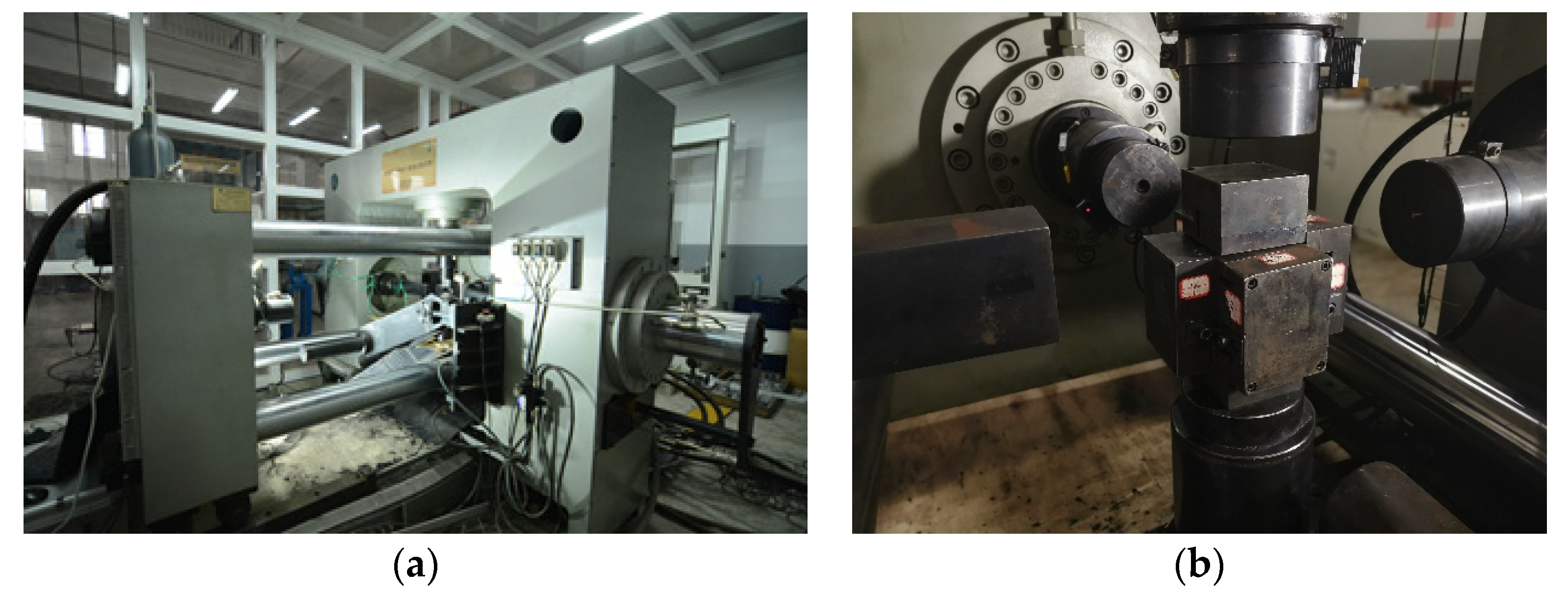
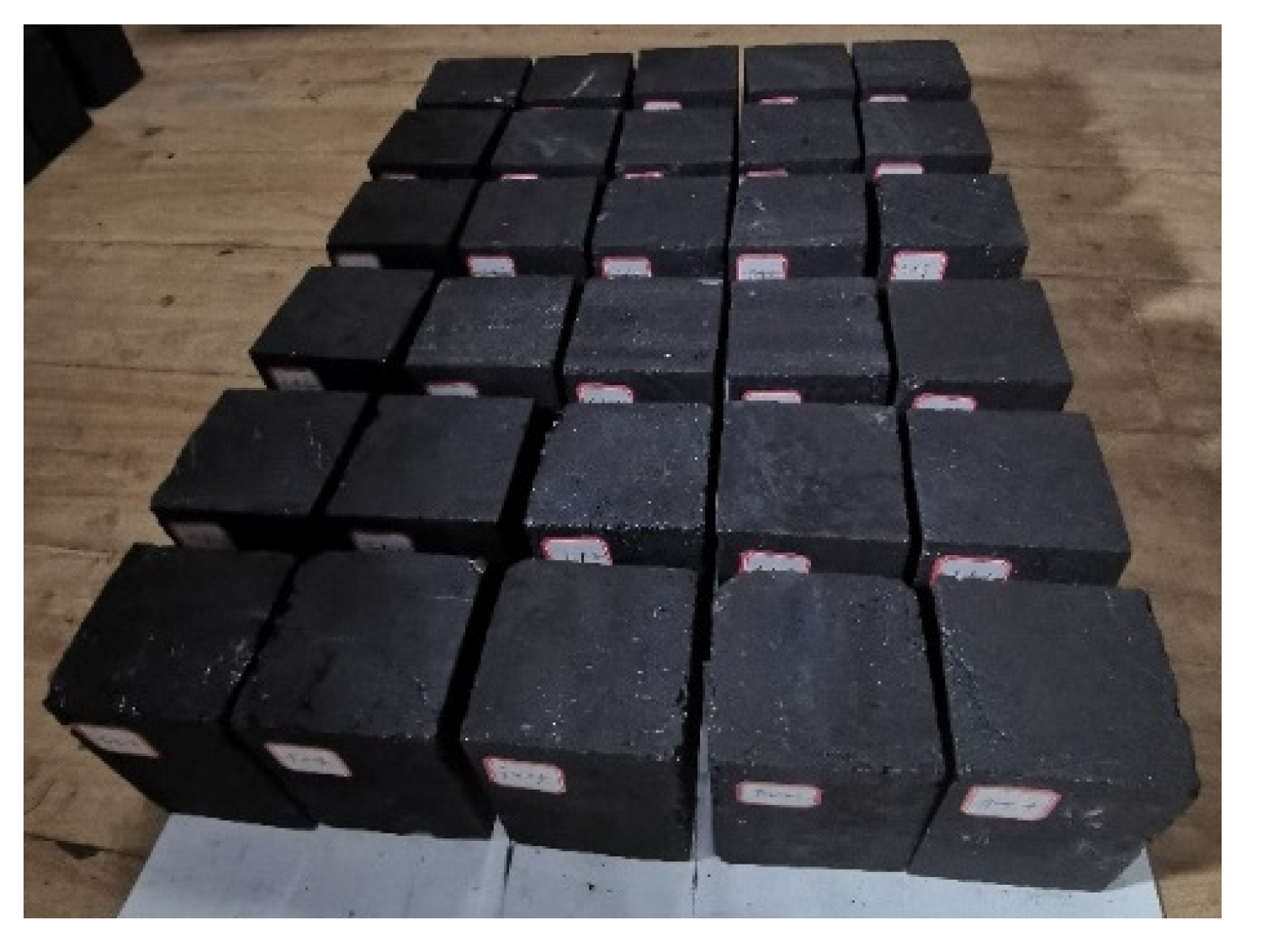
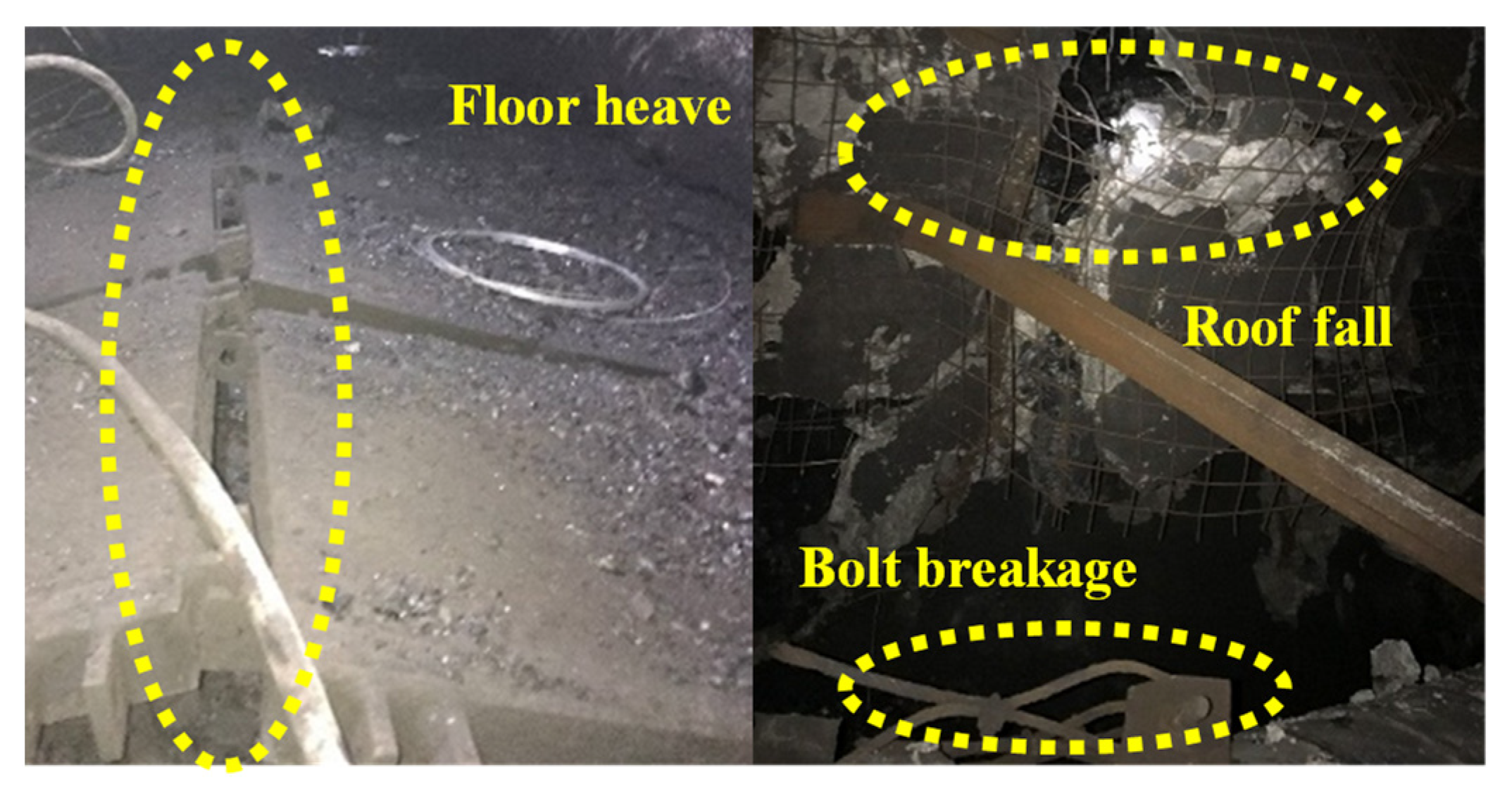
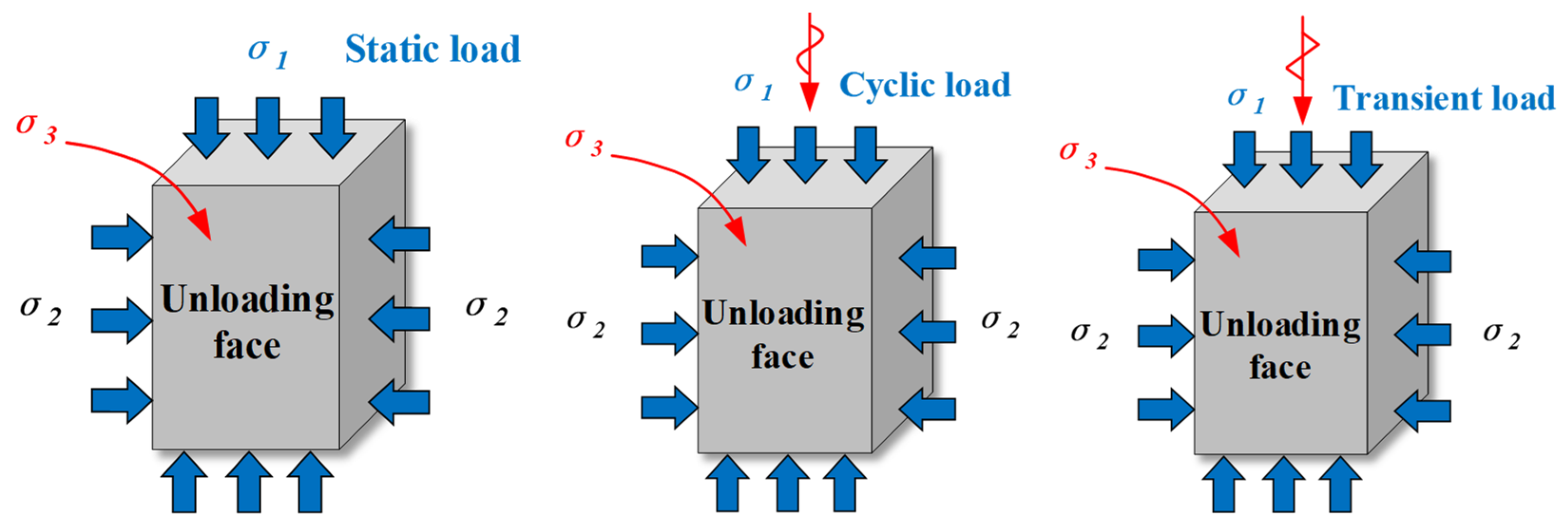
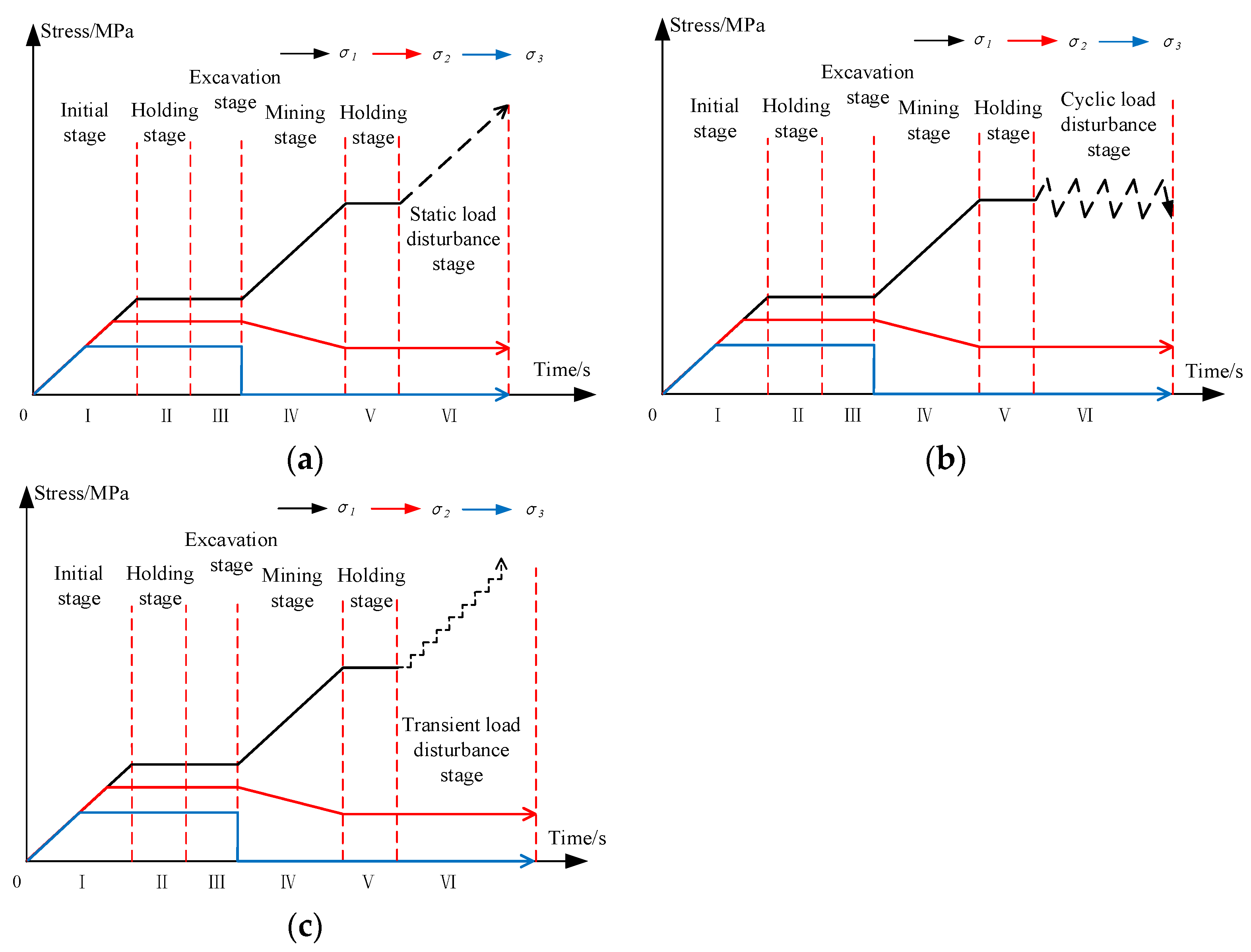
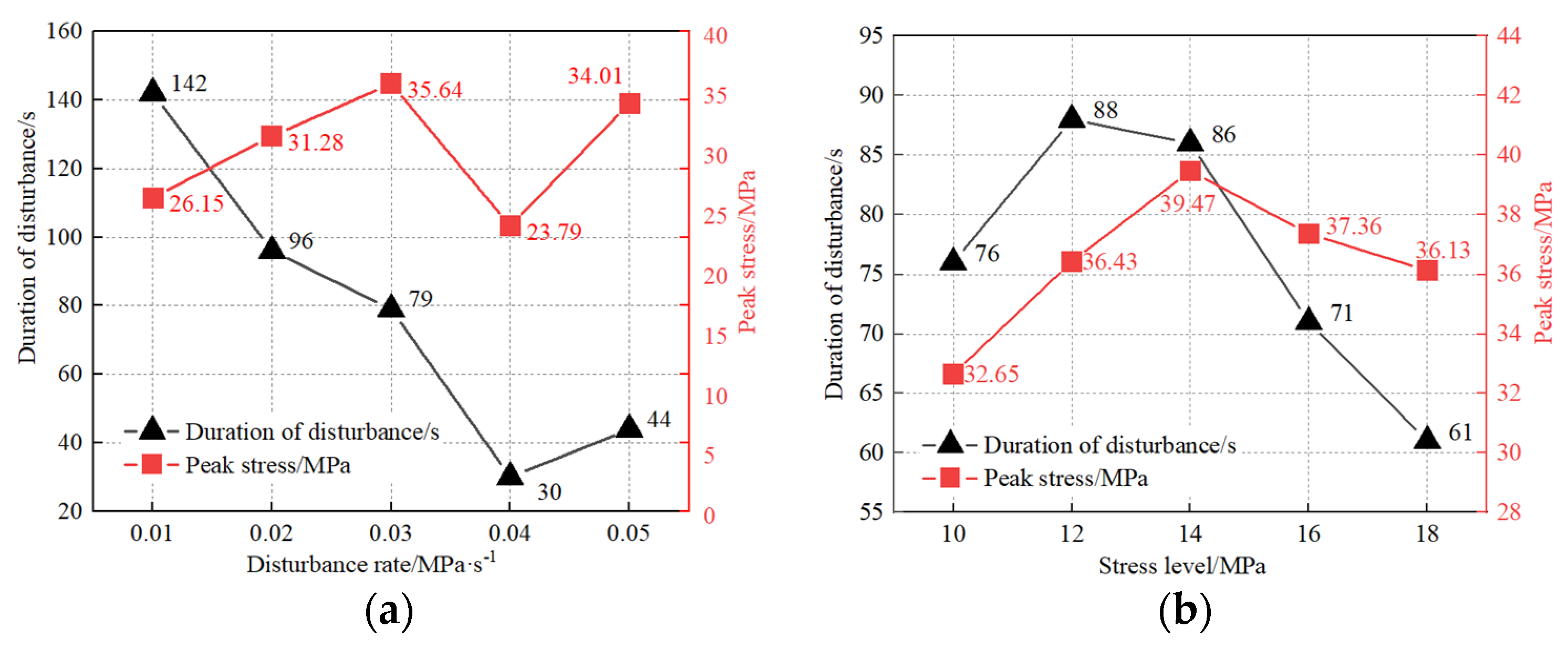
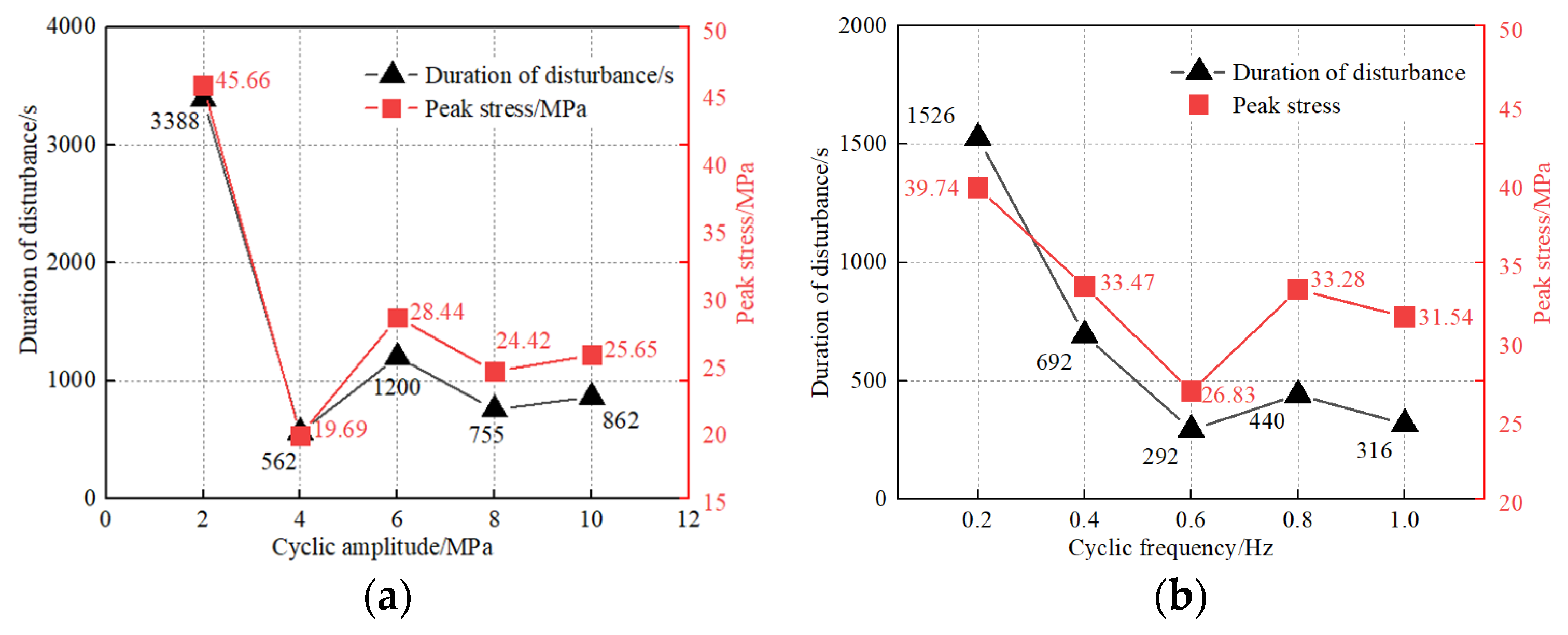

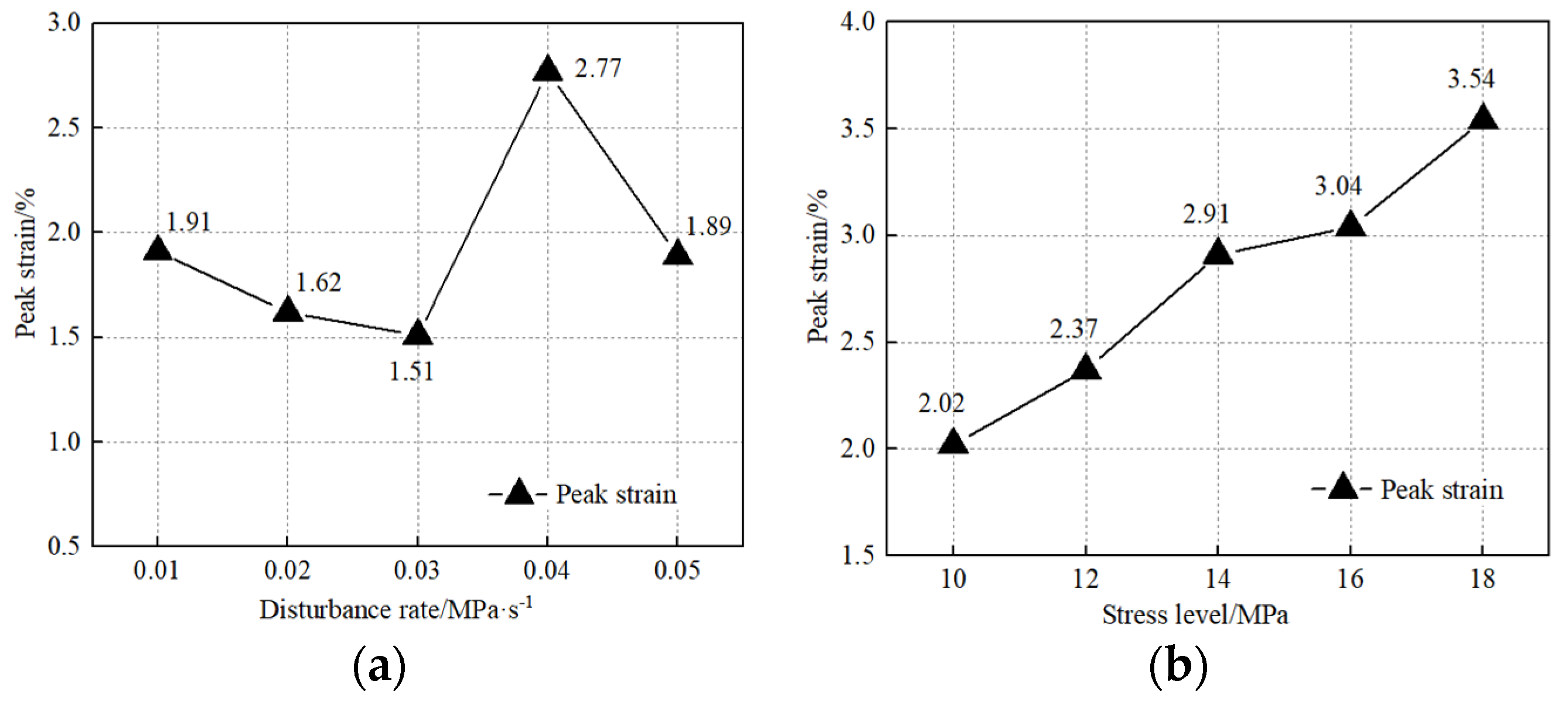
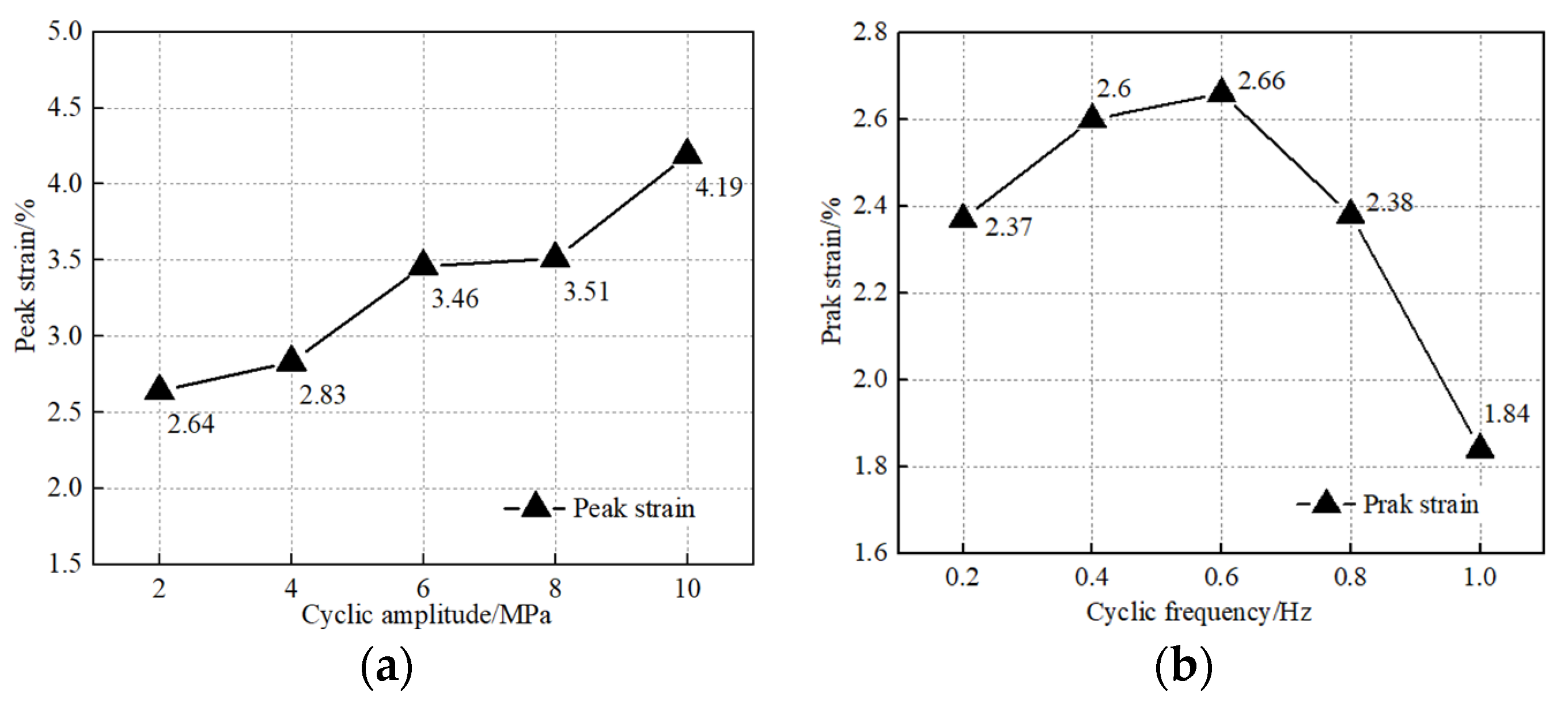
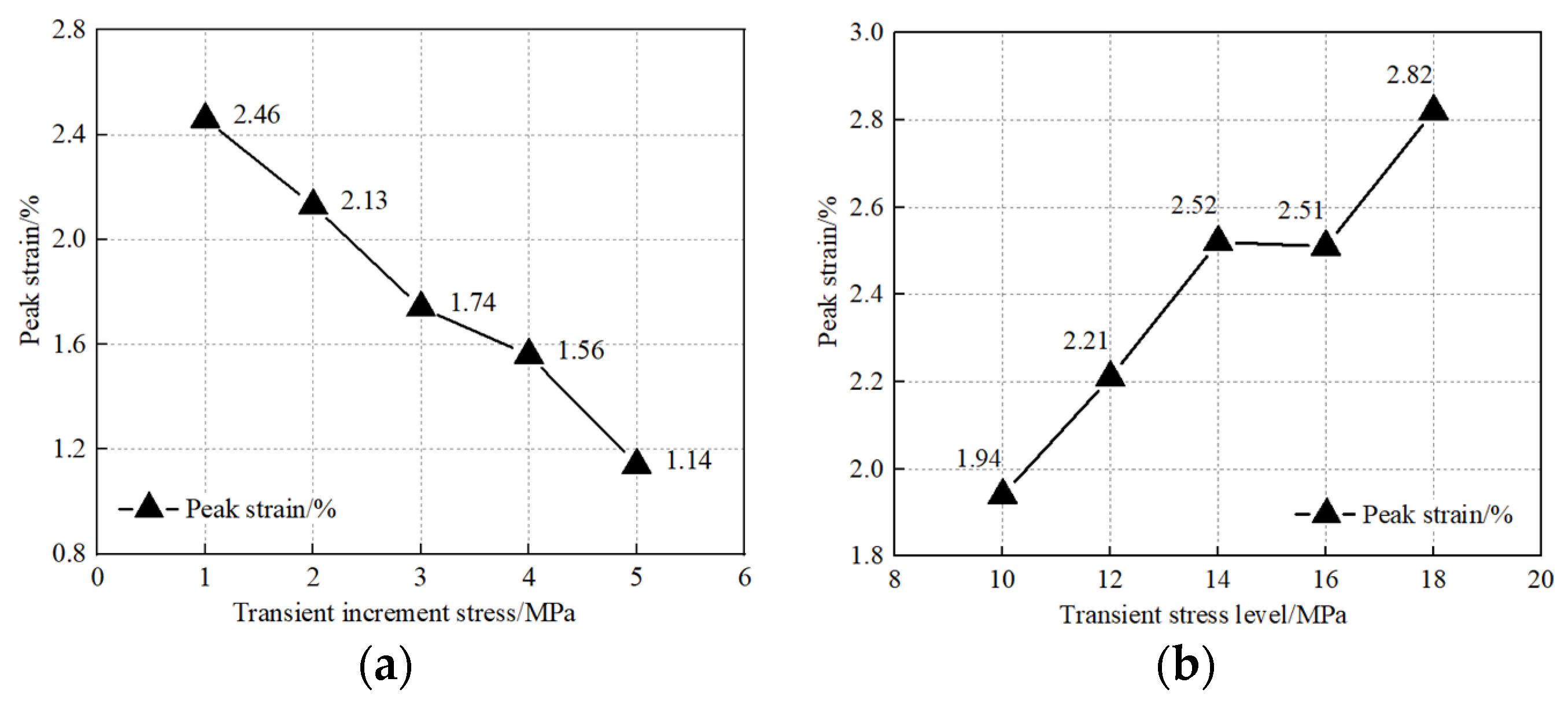
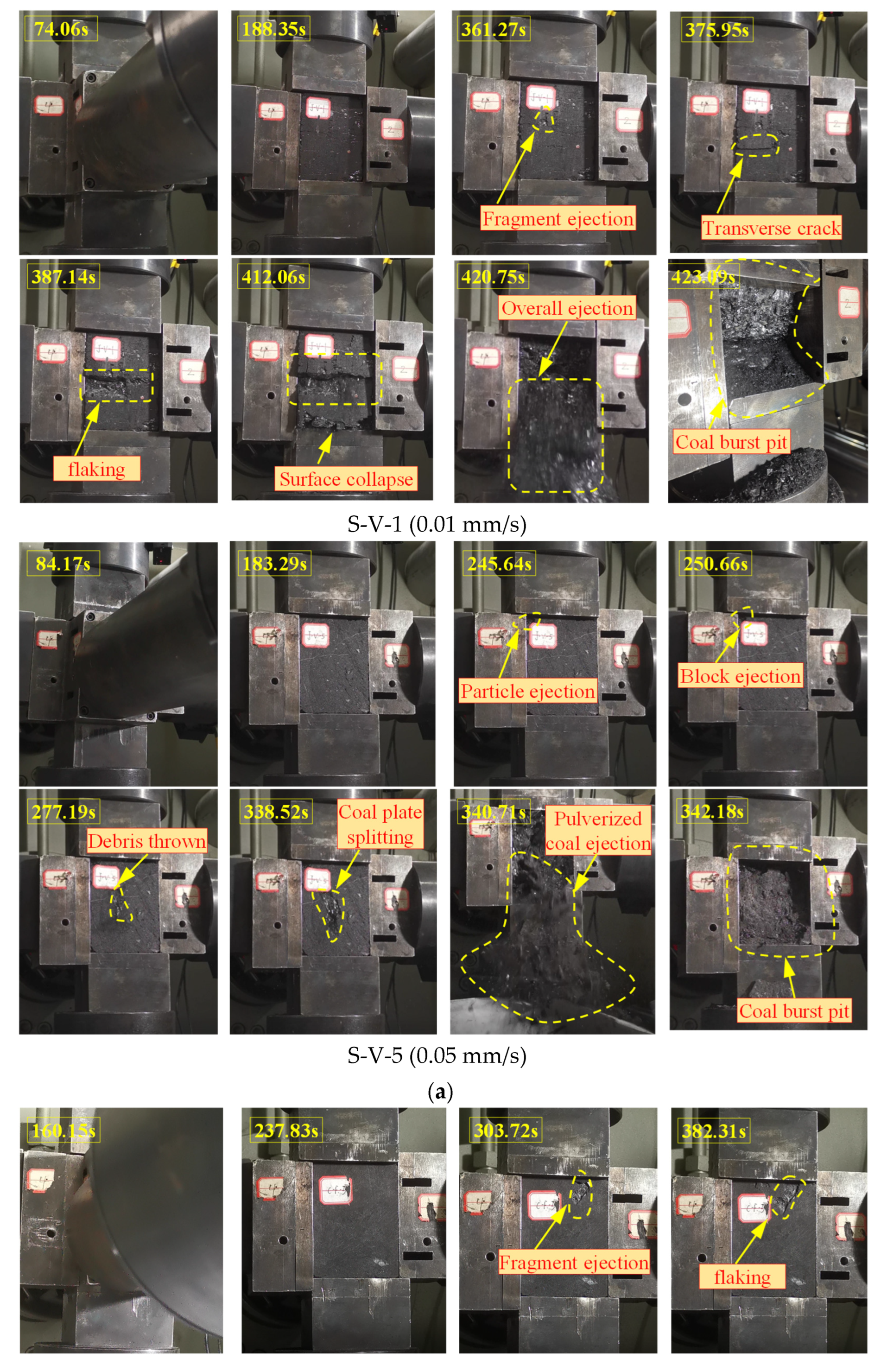
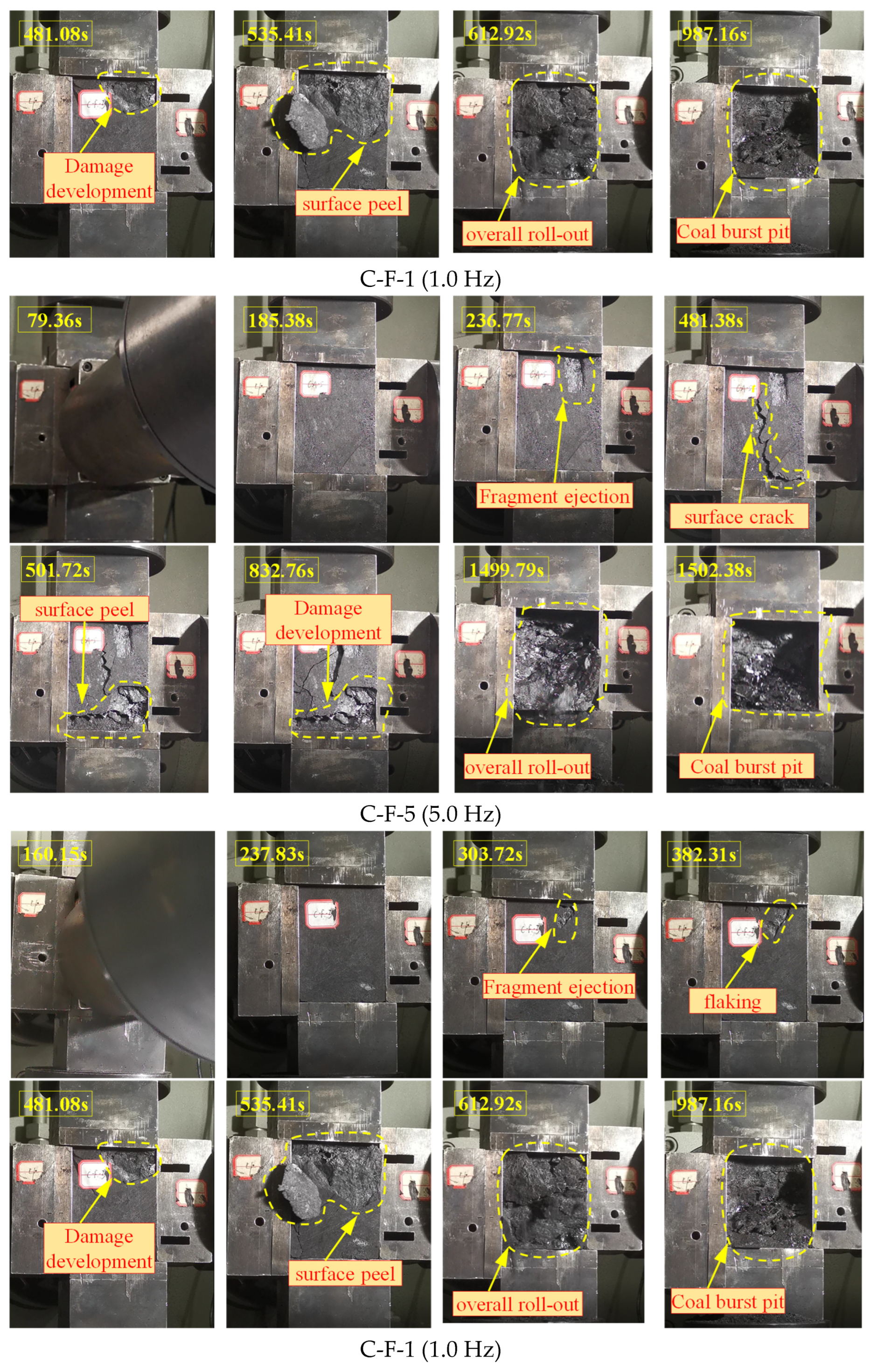

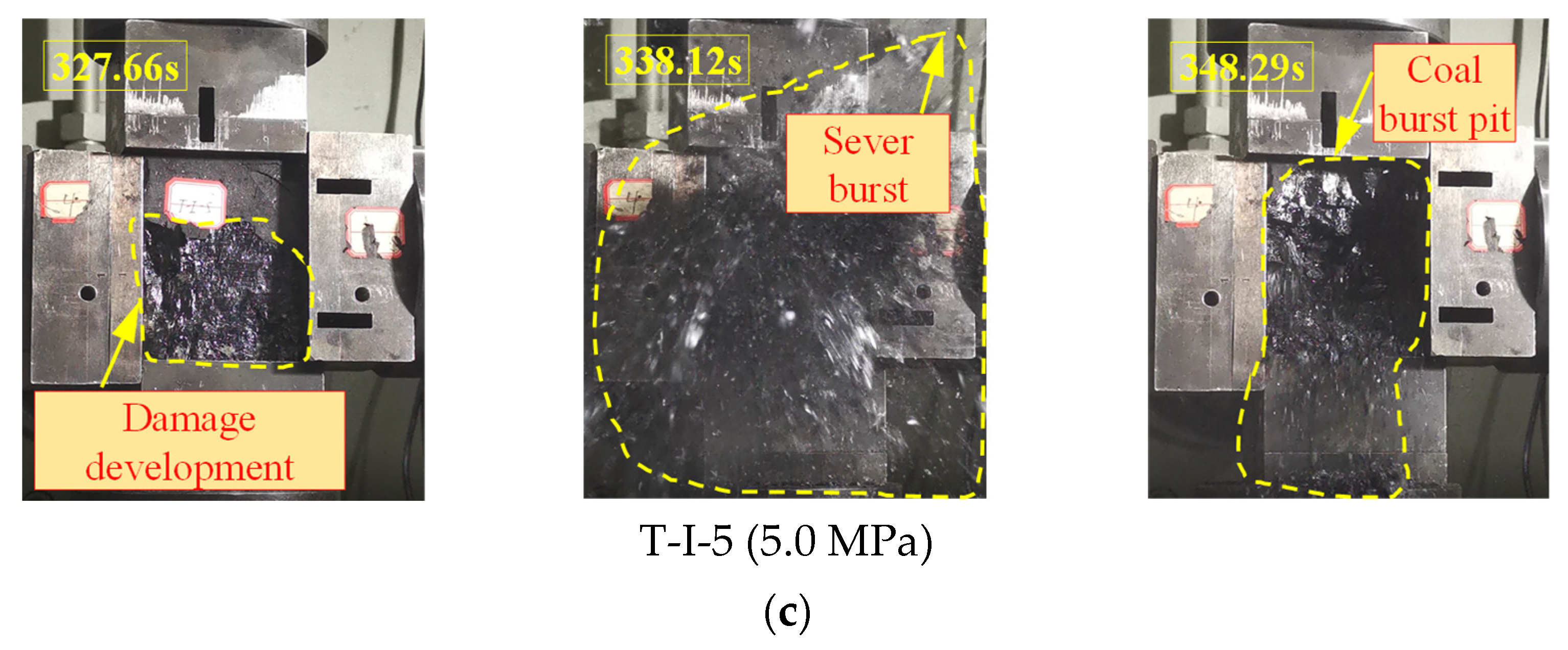
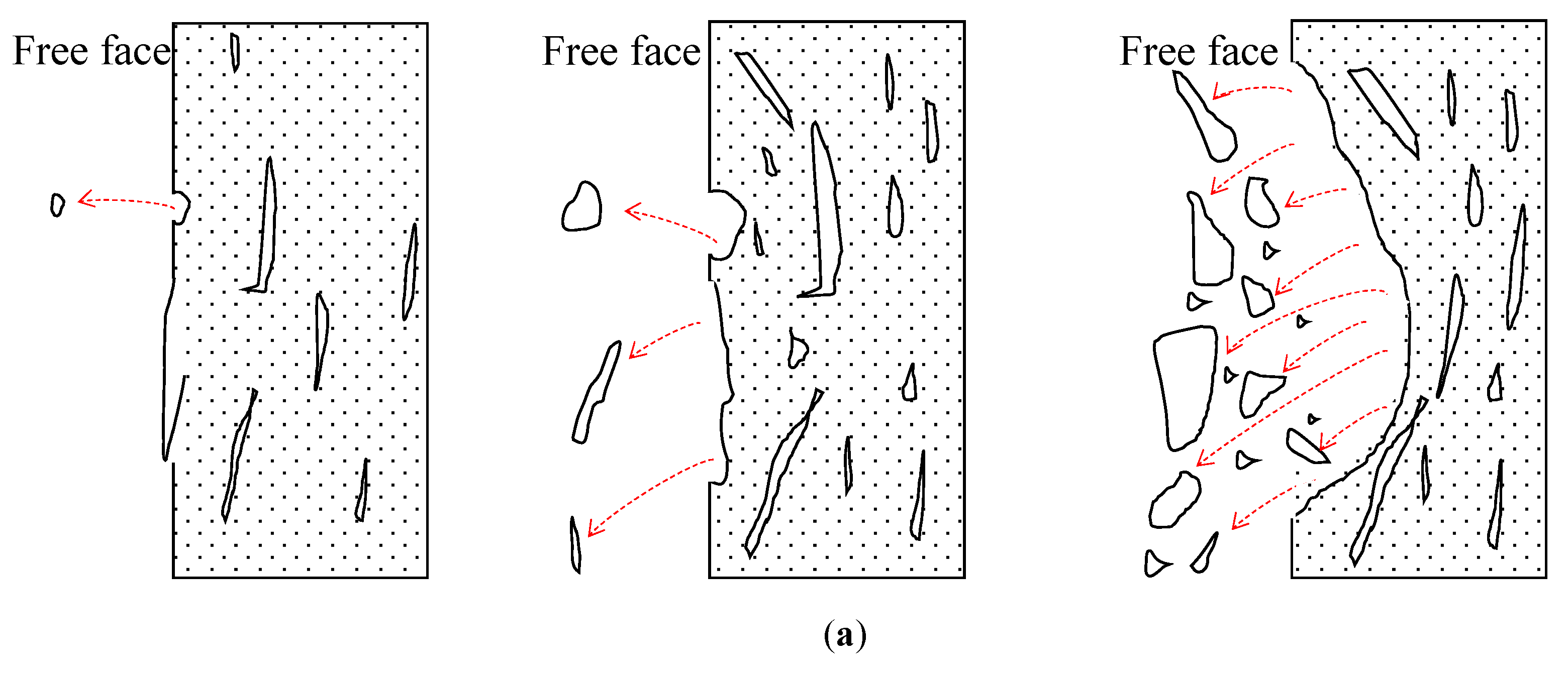
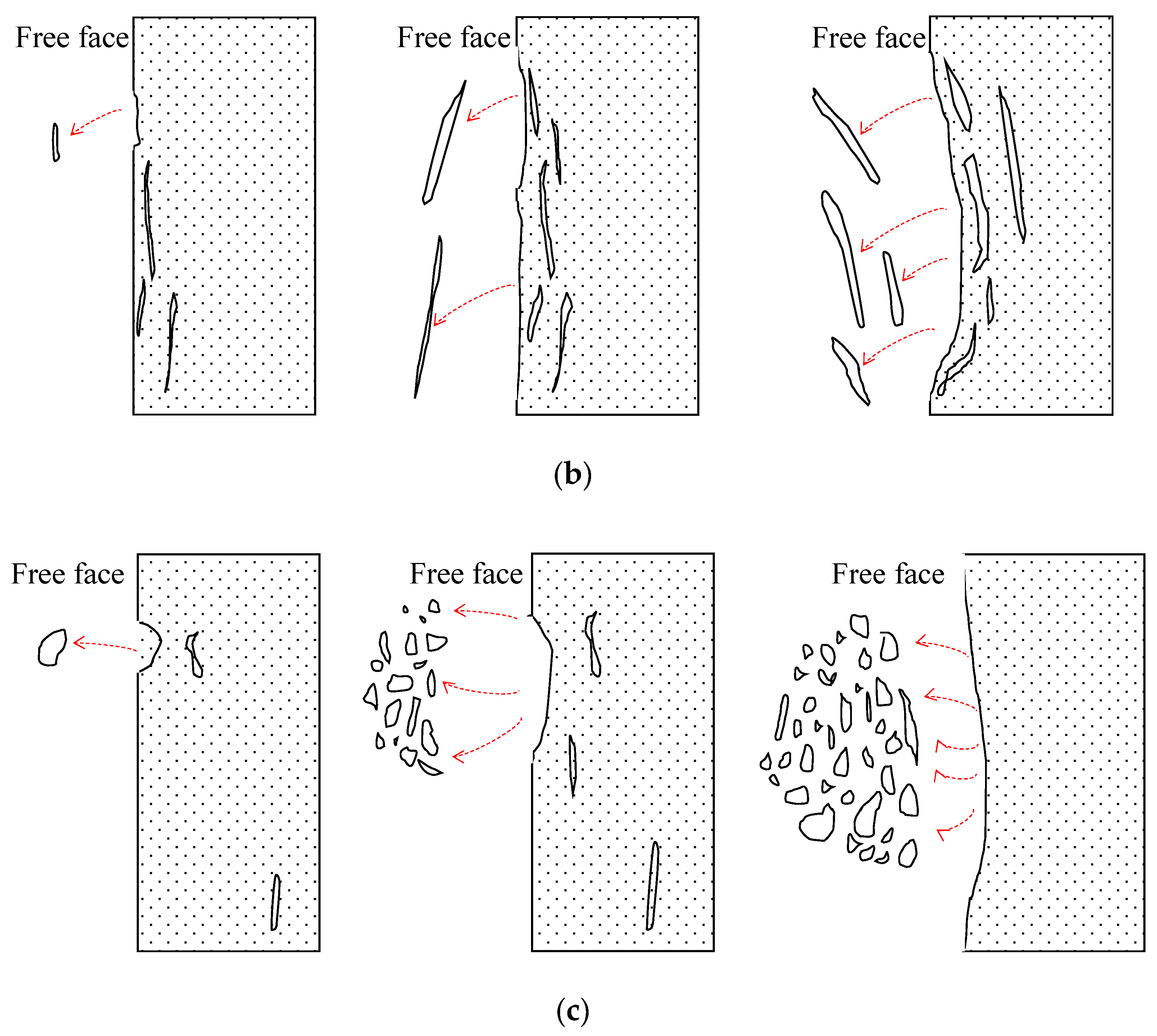

| Load Types | Testing Group | Control Variables | Variables Range |
|---|---|---|---|
| Static load | S-V | Disturbance rate | 0.1, 0.2, 0.3, 0.4, 0.5 MPa/s |
| S-L | Stress level | 10, 12, 14, 16, 18 MPa | |
| Cyclic load | C-A | Cyclic amplitude | 2, 4, 6, 8, 10 MPa |
| C-F | Cyclic frequency | 0.2, 0.4, 0.6, 0.8, 1.0 Hz | |
| Transient load | T-I | Transient increment | 1, 2, 3, 4, 5 MPa |
| T-L | Stress level | 10, 12, 14, 16, 18 MPa |
Publisher’s Note: MDPI stays neutral with regard to jurisdictional claims in published maps and institutional affiliations. |
© 2022 by the authors. Licensee MDPI, Basel, Switzerland. This article is an open access article distributed under the terms and conditions of the Creative Commons Attribution (CC BY) license (https://creativecommons.org/licenses/by/4.0/).
Share and Cite
Bai, J.; Dou, L.; Li, X.; Cao, J.; Wang, K.; Chai, Y.; Kan, J. Mechanism of Coal Burst Triggered by Disturbing Mining-Induced Stress: An Experimental Investigation. Appl. Sci. 2022, 12, 10993. https://doi.org/10.3390/app122110993
Bai J, Dou L, Li X, Cao J, Wang K, Chai Y, Kan J. Mechanism of Coal Burst Triggered by Disturbing Mining-Induced Stress: An Experimental Investigation. Applied Sciences. 2022; 12(21):10993. https://doi.org/10.3390/app122110993
Chicago/Turabian StyleBai, Jinzheng, Linming Dou, Xuwei Li, Jinrong Cao, Kangkang Wang, Yanjiang Chai, and Jiliang Kan. 2022. "Mechanism of Coal Burst Triggered by Disturbing Mining-Induced Stress: An Experimental Investigation" Applied Sciences 12, no. 21: 10993. https://doi.org/10.3390/app122110993
APA StyleBai, J., Dou, L., Li, X., Cao, J., Wang, K., Chai, Y., & Kan, J. (2022). Mechanism of Coal Burst Triggered by Disturbing Mining-Induced Stress: An Experimental Investigation. Applied Sciences, 12(21), 10993. https://doi.org/10.3390/app122110993






